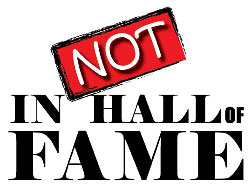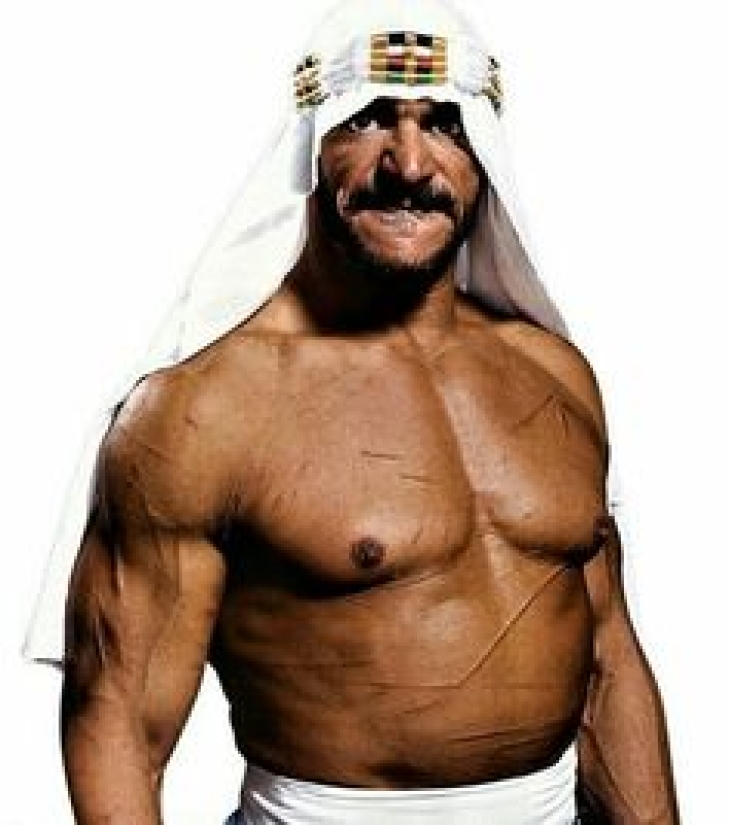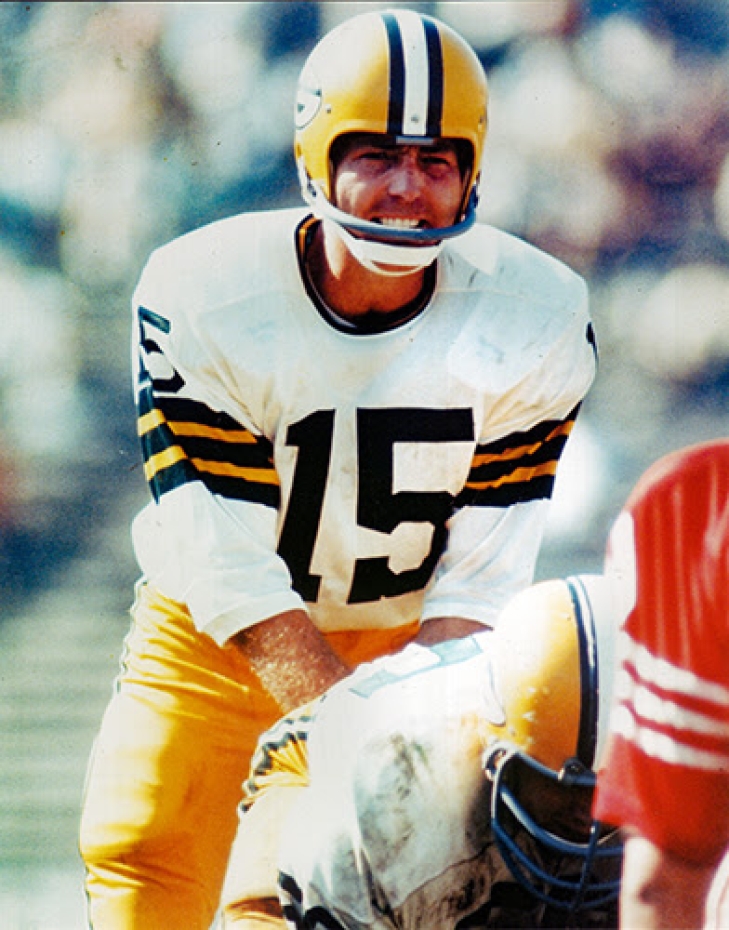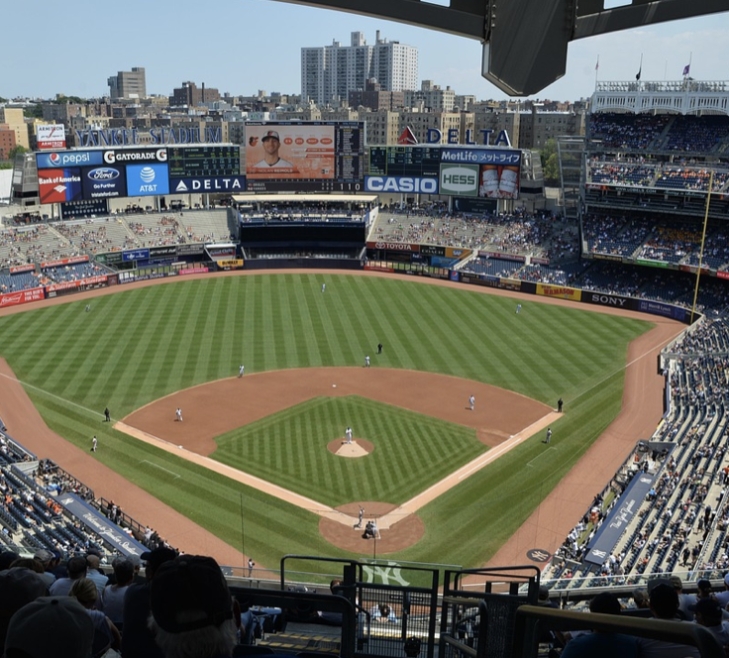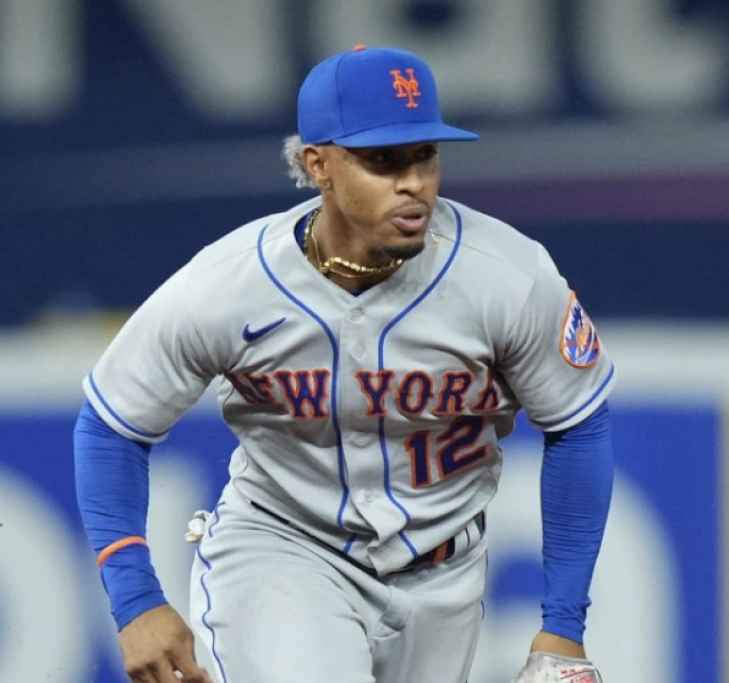
Committee Chairman
RIP: Sabu
Professional wrestling lost one of the great innovators as we learned that Terry Brunk, professionally known as Sabu, passed away at 60.
The nephew of wrestling legend, The Sheik, Sabu was trained by his uncle and debuted in 1985. Sabu gained national prominence in the early 1990s as one of the main stars of ECW, and over the second half of the decade, he would main event multiple shows for the Philadelphia-based promotion.
Sabu won all three major titles in ECW (World Heavyweight, World Television, and World Tag Team), and his aerial style combined with uncontrollable barbarism made him legendary within the industry. It also kept him from becoming a star on a National promotion, as WWE was gun-shy in hiring a wrestler they could not contain. He did have a shot with WCW, but that lasted less than a month.
Following ECW’s collapse in 2001, Sabu wrestled in minor promotions and the Indies. When the WWE resurrected ECW in 2006, Sabu was brought in, though his style, which won him over, had to be tamed. He didn’t last the year.
Sabu wrestled in the independents until three weeks ago when he wrestled his retirement match against Joey Janela.
We here at notinhalloffame.com would like to offer our condolences to Sabu's fans, friends, and family.
The Pro Football Hall of Fame Revisited Project: 1977 Final VOTE
1977 Pro Football Hall of Fame Revisited Project Class.
Here we are! Again!!
If you have been following our Pro Football Hall of Fame Revisited Project, you know we have asked the rhetorical question: What if the PFHOF began in January 1946?
After soliciting and obtaining a passionate group of football fans and historians, we sent out a ballot for a Preliminary Vote, in which we asked each voter to give us 25 names as their semi-finalists and 5 in the Senior Pool. We then asked the group to vote for their 15 Finalists in the Modern Era and 3 in the Senior Category. The final stage was to vote for their five Modern Era inductee and one Senior inductee.
This is the result of the 32nd official class.
Below are the final results of this project based on 34 votes.
Remember that we have reverted back to the top five candidates entering the Hall in the Modern Era
This is for the “Modern Era”
*Bold indicates they have been elected to the Pro Football Hall of Fame Revisited Class of 1977:
|
Player |
Year of Eligibility |
Vote Total |
|
Bart Starr QB |
1 |
26 |
|
Gale Sayers RB |
1 |
25 |
|
Forrest Gregg T-G-DT |
1 |
24 |
|
Willie Wood DB |
1 |
19 |
|
Ron Mix T-G |
1 |
15 |
|
Pat Harder FB |
19 |
8 |
|
Jimmy Patton DB |
6 |
7 |
|
Gino Cappelletti FL-SE-DB-WR-K |
2 |
7 |
|
Billy Howton E-FL |
9 |
6 |
|
Del Shofner E-DB |
5 |
6 |
|
Eddie Meador DB |
2 |
5 |
|
Tom Sestak DT |
4 |
4 |
|
Billy Wilson E-FL |
11 |
3 |
|
Johnny Robinson DB-FL-HB |
1 |
3 |
|
Les Richter LB-C |
10 |
1 |
This is for the “Senior Era”,
*Bold indicates they have been elected to the Pro Football Hall of Fame Revisited Class of 1977.
|
Al Nesser |
20 |
9 |
|
Buckets Goldenberg |
7 |
7 |
|
Woody Strode |
3 |
7 |
|
None of the Above |
N/A |
11 |
This is for the “Coaches/Contributors”,
*Bold indicates they have been elected to the Pro Football Hall of Fame Revisited Class of 1977.
|
Lamar Hunt (OWNER) |
2 |
17 |
|
Buddy Parker (COACH) |
8 |
15 |
|
Weeb Ewbank (COACH) |
1 |
2 |
|
None of the Above |
N/A |
0 |
About the 1977 Inductees:
Bart Starr G, GNB 1956-71: Inducted in the Pro Football Hall of Fame Revisited Project in 1977 on his 1st Ballot. Inducted into the actual Pro Football Hall of Fame in 1977.
When you think of the Green Bay Packers and their great history, this is automatically the one of first names that comes to mind.
How can it not be? Starr is the only Quarterback in the game's history to win five championships and was at his best when the pressure was at its tightest. His 9-1 Playoff Record and 104.8 Quarterback Rating tell you that. While Favre would obliterate his statistics, Starr put up great numbers for Quarterbacks of his era, retiring with the highest completion record in the NFL, and is the first superstar pivot in franchise history.
Oh, and is not “Bart Starr” the greatest name for a Quarterback ever?
Throw that name on any Quarterback today, and they will probably see their Quarterback rating rise by five percent just through osmosis.
Gale Sayers, HB-RB, CHI 1965-71: Inducted in the Pro Football Hall of Fame Revisited Project in 1977 on his 1st Ballot. Inducted into the actual Pro Football Hall of Fame in 1977.
There have been many football players who have been referred to as special, but the term is not hyperbolic when it is allocated to Gale Sayers.
A phenom at Kansas, Sayers was undoubtedly the top rookie in Football (1965) when he accumulated a league-leading 2,272 All-Purpose Yards, and set then-rookie records in Touchdowns (22). Sayers easily captured First Team All-Pro honors, and over the next two seasons, he was again the league-leader in APY, also capturing the Rushing Title and Yards From Scrimmage Title in 1966. Sayers likely could have done it again in 1968, but a brutal right knee injury in the ninth game of the year took him out for the rest of the campaign.
Despite the injury's severity, Sayers returned in 1969 and won his second Rushing Title (1,032 Yards) with a fifth straight First Team All-Pro. This was Sayers’ last hurrah, as another devastating knee injury held him to two Games in 1970, and he again was reduced to another two Games in 1971. Sayers retired after, and though his run was short, it was impactful.
Forrest Gregg, T-G-DT, GNB 1956 & 1958-1970 & DAL 1971. Inducted in the Pro Football Hall of Fame Revisited Project in 1977 on his 1st Ballot. Inducted into the actual Pro Football Hall of Fame in 1977.
How good must Forrest Gregg have been when Vince Lombardi called you the finest player he ever coached?
Forrest Gregg, the anchor of the Packers’ Offensive Line that expertly protected Bart Starr, was one of the game’s true iron men. Making nine Pro Bowls and six First Team All-Pros, Gregg started 188 consecutive games (187 with Green Bay), a record at the time. He is a five-time Champion with the Green Bay Packers and added one more with the Dallas Cowboys in his final year in the NFL.
Willie Wood, DB, GNB 1960-71. Inducted in the Pro Football Hall of Fame Revisited Project in 1977 on his 1st Ballot. Inducted into the actual Pro Football Hall of Fame in 1989.
Willie Wood spent his entire career with the Green Bay Packers, and just to get there was a feat in itself. Despite playing at high-profile USC, Wood went undrafted, likely due to being an African-American Quarterback at a time when they were not sought after in the NFL. Wood wrote a letter to Packers’ Head Coach, Vince Lombardi to get a tryout, which worked out well for both parties, as Wood made the team.
With the Packers already having Bart Starr as their QB, Wood moved to Safety, which he also played in college. Wood became a starter as a sophomore and led the NFL in Interceptions with 12 the following year. Becoming one of the top Defensive Backs in the 1960s, Wood helped the Packers win five titles, and individually was twice a First Team All-Pro and a five-time Pro Bowl Selection. Wood netted 48 Interceptions over his career and was also a competent returner, even leading the league in Yards per Punt Return (13.3) in 1964, and finished in the top ten in Punt Return Yards six times.
Ron Mix, T-G, LAC/SDG 1960-69 & OAK 1971. Inducted in the Pro Football Hall of Fame Revisited Project in 1977 on his 1st Ballot. Inducted into the actual Pro Football Hall of Fame in 1979.
Ron Mix had a spectacular career at USC, and to nobody's surprise, he was a First Round Pick in the NFL. The problem was that the Baltimore Colts on the East Coast chose him, and the native of Los Angeles wanted to stay close to home. In the AFL, the Boston Patriots took him in the first-ever draft of that league, but a trade to the Chargers allowed him to stay close to home.
It worked out for Mix and the Chargers, as the case can be made that he was the greatest Offensive Lineman in the history of the American Football League. Mix was a First Team All-Pro in his first nine seasons and an AFL All-Star in eight of them. Usually playing at Right Tackle, Mix was so good not only at blocking and protecting his QB, but he was brilliant in that he only ever got called on two holding penalties.
Mix was the first white player to join the black players in the 1965 AFL All-Star Game in New Orleans, protesting the city's civil rights and segregation issues.
After his only subpar year in a Bolts uniform (1969), Mix retired, but he returned for one year with the Oakland Raiders.
Lamar Hunt, Owner, KC 1960-2006. Inducted in the Pro Football Hall of Fame Revisited Project in 1977 on his 2nd Coaches/Contributor Ballot. Inducted into the actual Pro Football Hall of Fame in 1972.
Lamar Hunt was the brain trust behind the formation of the American Football League, which formed in 1960 and became a rival and near-equal to the National Football League.
Hunt was the owner of the Dallas Texans, which became the Kansas City Chiefs. The Chiefs were one of the most successful teams in the AFL, winning the championship in 1962. He would later champion the merger between the two leagues and oversee Kansas City's win of Super Bowl IV.
The importance of Lamar Hunt in professional football can not be understated.
Betting on MLB Teams with Legendary Pasts and Strong 2025 Potential
History doesn’t win baseball games, but it shapes how teams are viewed by bettors and fans alike. In Major League Baseball, legacy franchises such as the New York Yankees, St. Louis Cardinals, and Atlanta Braves carry decades of tradition, expectations, and pressure into each new season.
In 2025, these teams are not just living off reputation—they’re actively shaping the playoff picture. Understanding how their storied pasts intertwine with current performance offers unique value when evaluating betting opportunities. This season, legacy meets momentum in ways that matter both emotionally and numerically to fans and bettors.
Yankees: Chasing Glory in the Spotlight
No team carries the weight of expectation like the New York Yankees. With 27 World Series titles, they set the bar for legacy. Yet in recent years, they've fallen short of that benchmark, prompting offseason recalibrations. In 2025, they've returned with a deeper rotation, bolstered by breakout performances and improved defensive metrics.
Betting markets often price the Yankees higher due to public perception. That makes value harder to find unless you're timing your wagers around strategic series or lineup matchups. Their improved bullpen and aggressive base running have closed tight games, but inconsistencies at the plate linger against elite pitchers. That gap between reputation and execution must be weighed when evaluating their odds.
The pinstripes draw massive attention, but bettors need to look beyond the logo. Historical dominance fuels high expectations, which can inflate spreads and run lines. If you're betting the Yankees this year, success lies in isolating games where public enthusiasm hasn't pushed the line beyond its true worth.
Cardinals: Identity Through Instability
The St. Louis Cardinals define National League consistency. With 11 championships and a proud developmental pipeline, they’re a team that always seems to "find a way." But the 2020s haven’t been smooth. Injuries, managerial shifts, and roster turnover eroded their reliability. This MLB season, however, they’ve rebounded with a young core and smarter rotation usage.
St. Louis isn’t overwhelming opponents with power. They’re winning with situational hitting, cleaner fielding, and a re-energized fan base. As a result, they're sneaking under the radar in betting circles. Their lines often reflect mid-tier status, despite outperforming opponents with better records.
This makes the Cardinals particularly appealing in underdog spots and series matchups against high-profile teams. Their run differential tells a more promising story than their overall win total. In betting, that kind of quiet upside is rare in a franchise so steeped in legacy. They don’t always win big, but they tend to keep games close—making the run line a compelling angle.
Braves: Built to Dominate—Again
Unlike the Yankees or Cardinals, the Atlanta Braves are enjoying a legacy peak, not rebuilding toward one. Since the late 2010s, they've operated like a well-oiled machine—blending scouting excellence with financial discipline and elite player development. That formula hasn't changed. Their 2025 roster is arguably better than their 2021 championship squad, with more depth and higher ceilings.
Bookmakers have caught on. The Braves are frequently installed as favorites, even on the road or against other division leaders. They offer fewer obvious value spots, but their consistency makes them a strong anchor for parlays or live bets.
To navigate their pricing, it helps to stay current on MLB insights and news, especially regarding pitcher matchups, travel schedules, and lineup rotations. Atlanta’s edge often lies in the margins—data that isn’t always reflected in surface-level stats but becomes clear when tracking the league closely.
Their young stars play with veteran poise, and their bullpen hasn’t regressed despite heavy use. That combination creates a high floor for bettors who want reliability over risk.
Legacy’s Role in the Betting Market
Historical success doesn't determine outcomes, but it shapes narratives—and narratives shape markets. Teams like the Yankees and Braves often come with premium pricing, while the Cardinals may be undervalued despite strong fundamentals. Understanding these dynamics is crucial when assessing a line’s true worth.
Public betting tends to favor known quantities. When teams with legendary pasts perform well, that attention intensifies. The downside? Overbetting. The upside? Knowing how to spot inflated odds and take the opposite side, or finding profitable props and totals instead.
Reputable online sportsbooks like FanDuel often reflect this public sentiment quickly, especially during high-profile matchups. Being able to interpret when odds shift due to betting volume rather than actual team form can give you an edge. Legacy teams in marquee games often draw casual money, pushing lines toward unsustainable levels.
The savvy bettor knows this and waits for live betting opportunities when momentum shifts or key players exit unexpectedly. Legacy can cloud judgment—unless you’re reading between the lines.
When History and Momentum Align
There are moments when legacy and performance lock into place. The Braves in 2025 feel like one of those cases. The Yankees, while not flawless, are trending upward in tight, winnable games. And the Cardinals, flying under radar, are quietly beating projections. In those pockets, bettors find value that blends emotional confidence with statistical backing.
It’s rare for all three franchises to be competitive in the same season. That makes this year particularly compelling. From a wagering standpoint, this opens the door to futures bets, division winner markets, and series predictions that hinge on resilience and institutional success.
Legacy teams know how to navigate pressure. They've done it for generations. That experience often translates into sharper in-game decisions, fewer collapses, and steadier postseason pushes. These qualities don’t always show up in the box score, but they matter to bettors who factor in psychology and leadership.
What It Means for the 2025 Season
As the calendar rolls deeper into summer, these teams will shape not only the standings but also the betting conversation. You don’t need to be a die-hard fan of the Yankees, Cardinals, or Braves to appreciate what they represent. They boast full trophy cases, but it’s their present trajectory that makes them worth watching now.
For bettors, the edge comes from respecting legacy without becoming blinded by it. Track pitching matchups, monitor rest days, and weigh form over fame. That balance is where long-term success lies. The legends still have something to prove—and for once, they just might have the roster to do it.
NIHOF MLB 2025 Cup Standings: Week 5, MAY 5
It is with great pleasure that we are bringing back the Notinhalloffame MLB Regular Cup, and let us explain how this works:
For every regular-season game, we anointed the best five players with descending points, 5-4-3-2-1.
We know the following:
- The top players for the MLB NIHOF Cup are not always the best in the league, as injuries keep players out of games, and a premium on staying healthy can help pile up points. It also does not hurt to be a top player on an average or mediocre team, as they can amass Cup points more easily than elite players on loaded squads.
- In Baseball, it is more common than in Basketball and Hockey for a player to accrue points with a single Home Run in a game, which favors position players. Starting Pitchers have a hard time with approximately 30-35 Starts and throwing fewer innings than previous generations. This is also true for closers not made for this process.
- Please remember that this is NOT necessarily who we think were the best players this year and does not reflect overall consistency. Treat this the way we did: as a fun process and more of a compilation of temporary statistical domination.
Here is the current top ten after games concluded on May 5.
1. Pete Alonso, New York Mets: 67 Cup Points in 36 Games. (#1 Last Week). 2.4 bWAR, 26 Runs, 45 Hits, 9 Home Runs, 33 Runs Batted In, .349/.469/.674 Slash Line, 1.144 OPS & 225 OPS+.
2. Aaron Judge, New York Yankees: 59 Cup Points in 29 Games. (#3 Last Week). 3.0 bWAR, 32 Runs, 55 Hits, 11 Home Runs, 33 Runs Batted In, .414/.503/.759 Slash Line, 1.263 OPS & 257 OPS+.
3. Francisco Lindor, New York Mets: 48 Cup Points in 28 Games. (#4 Last Week). 0.8 bWAR, 23 Runs, 41 Hits, 7 Home Runs, 22 Runs Batted In, .289/.358/.472 Slash Line, .830 OPS & 137 OPS+.
4. Fernando Tatis Jr., San Diego Padres: 46 Cup Points in 33 Games. (#2 Last Week). 2.3 bWAR, 26 Runs, 40 Hits, 8 Home Runs, 18 Runs Batted In, .317/.387/.556 Slash Line, .943 OPS & 161 OPS+.
5. (TIE) Corbin Carroll, Arizona Diamondbacks: 45 Cup Points in 28 Games. (#4 Last Week). 1.4 bWAR, 35 Runs, 43 Hits, 10 Home Runs, 27 Runs Batted In, .287/.352/.593 Slash Line, .945 OPS & 159 OPS+.
5. (TIE) Bobby Witt Jr., Kansas City Royals: 45 Cup Points in 36 Games. (Not in the Top Ten Last Week). 2.2 bWAR, 22 Runs, 43 Hits, 4 Home Runs, 18 Runs Batted In, .314/.389/.504 Slash Line, .892 OPS & 152 OPS+.
7. (TIE) Tyler Soderstrom, The Athletics: 39 Cup Points in 36 Games. (#6 last week). 1.1 bWAR, 23 Runs, 38 Hits, 9 Home Runs, 25 Runs Batted In, .279/.344/.515 Slash Line, .940 OPS & 164 OPS+.
7. (TIE) Austin Riley, Atlanta Braves: 39 Cup Points in 36 Games. (Not in the Top Ten last week). 1.3 bWAR, 15 Runs, 41 Hits, 8 Home Runs, 25 Runs Batted In, .291/.333/.504 Slash Line, .837 OPS & 131 OPS+.
7. (TIE) Wilyer Abreu, Boston Red Sox: 39 Cup Points in 34 Games. (Not in the Top Ten Last Week). 1.7 bWAR, 20 Runs, 31 Hits, 7 Home Runs, 22 Runs Batted In, .279/.394/.523 Slash Line, .916 OPS & 156 OPS+.
7. (TIE) Shohei Ohtani, Los Angeles Dodgers: 39 Cup Points in 33 Games. (Not in the Top Ten Last Week). 1.7 bWAR, 37 Runs, 38 Hits, 9 Home Runs, 13 Runs Batted In, .292/.399/.585 Slash Line, .983 OPS & 177 OPS+.
Arizona’s Josh Naylor, Detroit’s Spencer Torkelson, Los Angeles (NL)’s Teoscar Hernandez & St. Louis’s Lars Nootbar fell off the top ten.
Of note, 733 baseball players have obtained at least 1 point, up from 690 last week.
